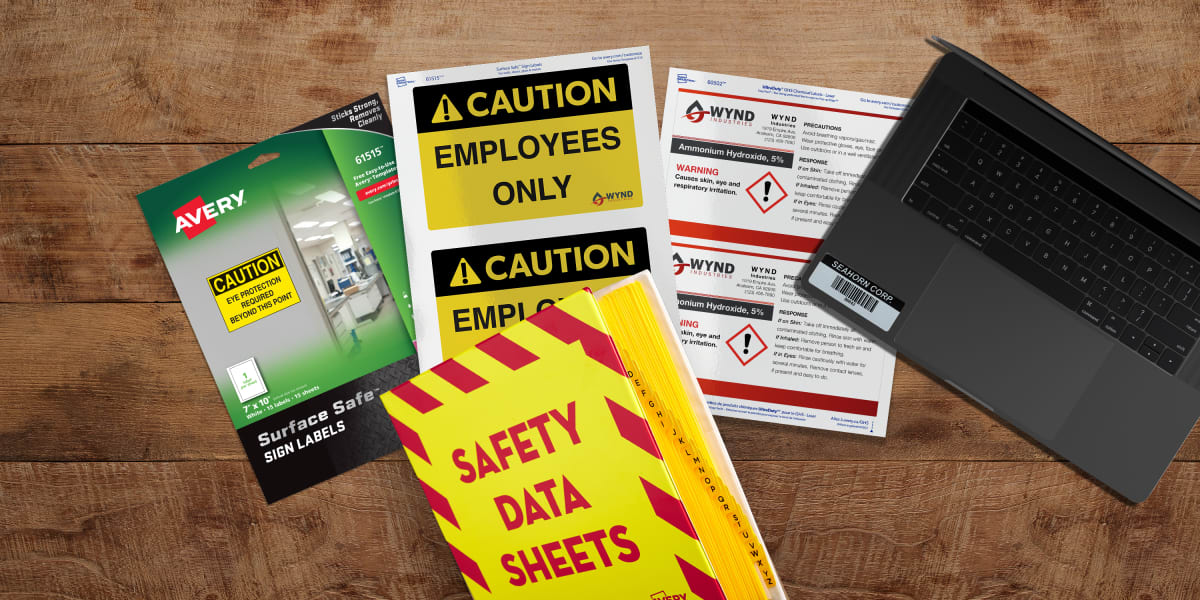What is a safety program?
A safety program is a formal set of plans for workplace safety and compliance with both state and federal laws. When you create a written set of policies, procedures, standards, and practices for this purpose, you have created a safety program. In addition to the formalized plans that you create, health, safety, and compliance should be reflected in day-to-day practice by both employees and management.
What is the objective of a safety program?
The main goal of any safety program is protecting workers from potential workplace hazards. In other words, preventing conditions and/or practices that can result in injury or illness. However, complying with federal and state laws are also a big part of it. For example, regulations set by the Occupational Safety and Health Administration (OSHA) which can be very pricey if violated.
Here is a direct quote from the OSHA website for Safe and Sound Week:
“Successful safety and health programs can proactively identify and manage workplace hazards before they cause injury or illness, improving sustainability and the bottom line.”
What are the components of a safety program?
According to the OSHA safety management webpage, there are seven core components of a safety program. While OSHA does not have a specific regulation for this topic, you should always consider their recommendations as best practices.
Here are the seven components that they recommend:
- Management leadership
- Worker participation
- Hazard identification and assessment
- Hazard prevention and control
- Education and training
- Program evaluation and improvement
- Communication and coordination for host employers, contractors, and staffing agencies
How to make your safety program successful
Without a doubt, the best way to make your safety program successful is to build actionable steps around the core components outlined by OSHA. Actionable steps make your program more successful because they create a proactive approach to workplace hazard prevention and compliance. To illustrate, here are actionable steps to success based on the OSHA core components:
- Firstly, commit to workplace safety at the top level
- Secondly, actively encourage worker participation
- Then, standardize how you will identify and assess hazards
- Next, establish hazard prevention and control measures
- Follow with training and education for employees
- After that, set a routine and standards for measuring success
- And finally, communicate your safety policies with visitors
1) Commit to workplace safety at the top level
Committing at the top level means that management sets the tone for everyone else. This includes business owners, managers, and supervisors coming together to provide leadership, vision, and resources. Not to mention, leading by example which promotes safety culture and makes it a core value.
First, communicate with a written safety policy that establishes roles and responsibilities. Second, define your program’s goals. Then, allocate resources to accomplish them. Lastly, track implementation and progress, provide recognition for meeting goals, and encourage both management and workers to communicate freely about health and safety.
2) Actively encourage worker participation
It’s important that you encourage workers to participate at every level of your program. For one thing, they’re often the ones most likely see potential hazards first. Meaning they’re essentially your “eyes on the ground.” That’s why it’s essential to allocate enough time and resources to facilitate participation.
For example, provide time and access to training and certification. Or, hold safety meetings during regular work hours. Additionally, keep an open door for feedback and ensure that your employees have no fear of retaliation. Actively encouraging participation in your safety program truly demonstrates that employee safety is important to you.

Create your own safety signs and labels online with Avery software and print them yourself from standard laser or inkjet printers.
3) Standardize how you will identify and assess hazards
You can’t fix a problem that you don’t know exists. For that reason, it’s critical to have an ongoing process for evaluating both workplace conditions and practices for possible hazards. Identifying and assessing potential hazards should be a group effort from both employers and workers.
Firstly, conduct an initial inspection and audit records to review information about any existing hazards that might be present. Then, create a schedule for periodic inspections to identify new or recurring issues. From there, create written policy and procedures for investigating all incidents with due diligence. Once you have this information you can use it to identify trends and prioritize corrective action.
4) Establish hazard prevention and control measures
Effective controls are the best way to protect employees from workplace hazards, pure and simple. Every safety program should have written procedures for preventing and controlling hazards that have been identified in the workplace. First and foremost, look to workers for input. Not only do they often have the best understanding of everyday conditions but it’s also another opportunity to encourage participation.
Start with a hierarchy of controls to figure out options for controlling hazards. Then, write up a hazard control plan that outlines how to select and implement the right control for the situation. Make sure it includes steps to protect workers during emergencies and non-routine activities. Finally, evaluate how effective existing controls are. If they’re not working, it’s time to consider different controls. Especially if there are new technologies available that may work better.
5) Follow with training and education for employees
Safety training and education benefits are twofold. Firstly, keeping workers and managers informed increases workplace safety and productivity. Secondly, it engages employees and encourages active participation.
Of course, specialized training is required when a job involves unique hazards. For example, working with energized machinery or equipment. However, all employees should be educated in general safety and should be able to identify, report, and control common workplace hazards. Moreover, safety training and education provide the necessary skills for employees to work safely and avoid creating hazards themselves.
6) Set a routine and standards for measuring success
When you implement your safety program, include an initial evaluation. At this stage it’s also a good idea to outline some key metrics or benchmarks you will look at in order to measure success. This will help you track goals as well as pinpoint when you need to make adjustments. Then, set a schedule for routine evaluations (at least once a year) to figure out what’s working and what’s not.
In fact, OSHA Safe and Sound Week (held in annually in August) is the perfect time for reviewing your safety program. First, make a plan to audit your safety program to ensure you’ve covered all key components. Then, share the results from evaluations and recognize employees that have contributed to your program’s successes.
7) Communicate your safety policies with visitors
When you host temporary and/or contract workers communication with staffing agencies and the contractors is absolutely critical. Lack of communication makes it difficult to create consistency, if not causing outright confusion about safety policies and procedures. Inconsistency can even cause employees to question the credibility of your safety program, undermining engagement and participation.
Before visiting workers arrive on site, you should set aside time to communicate with contractors, staffing agencies and their workers to make sure they know a few things. Namely, the types of hazards that might be present and the procedures to control and/or prevent exposure to them. You should also make sure that visiting workers know how to contact you to report injury, illness, an incident, or if they have a safety concern. It’s not a bad idea to post extra safety signage to help keep procedures front of mind either.
Summing up safety program basics and how you can make yours a success
A safety program is a written set of policies, procedures, standards, and practices for workplace safety and compliance. The objective is to proactively spot and correct workplace hazards before they cause injury or illness, or cause a pricey compliance violation. According to OSHA, there are seven core components your safety program should include:
- Management leadership
- Worker participation
- Hazard identification and assessment
- Hazard prevention and control
- Education and training
- Program evaluation and improvement
- Communication and coordination for host employers, contractors, and staffing agencies
Furthermore, the best way to make your safety program successful is to base your actions on OSHA recommendations. Specifically, building actionable steps around the core components outlined by OSHA. Firstly, commit to workplace safety at the top level. Secondly, actively encourage worker participation. Then, standardize how you will identify and assess hazards and establish hazard prevention and control measures. Follow with safety training and education for employees. After that, set a routine and standards for measuring success. Finally, communicate your safety policies with visiting workers.
What do you do to encourage participation and recognize safety excellence in your facility? Join the conversation on LinkedIn and Facebook.
Please note, the contents of this article and related articles on avery.com/industrial are for informational purposes only, are general in nature, and are not intended to and should not be relied upon or construed as a legal opinion or legal advice regarding any specific issue or factual circumstance




